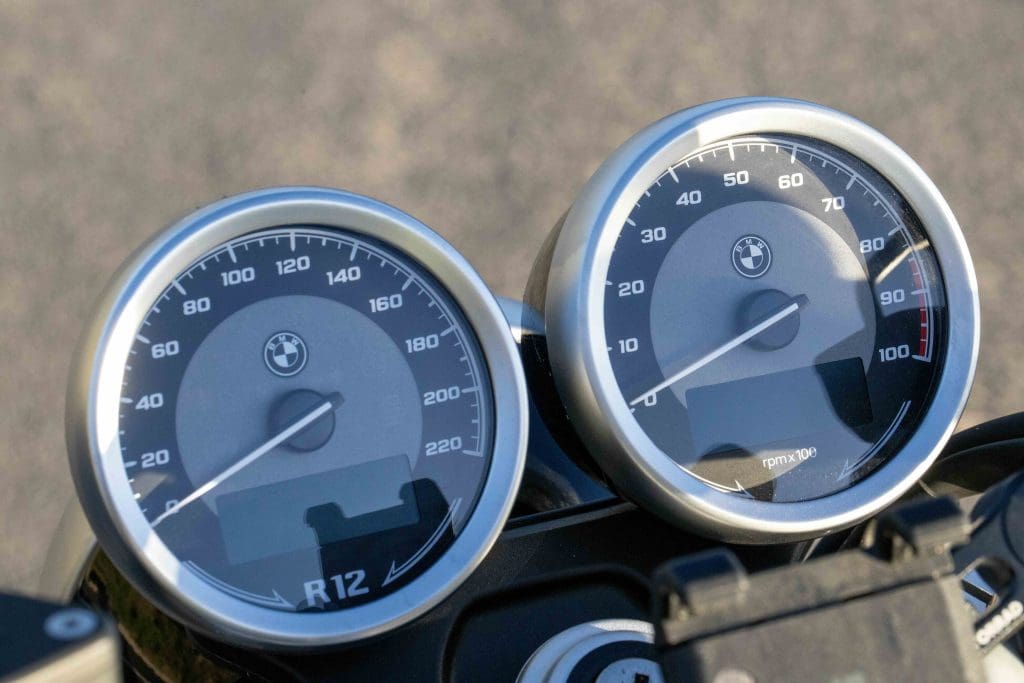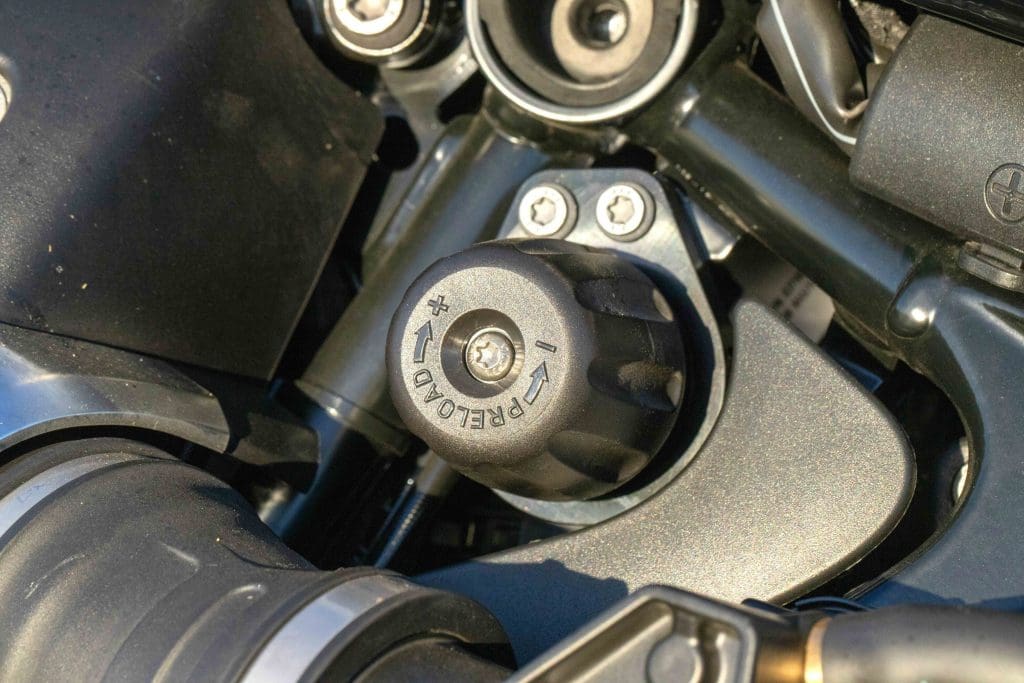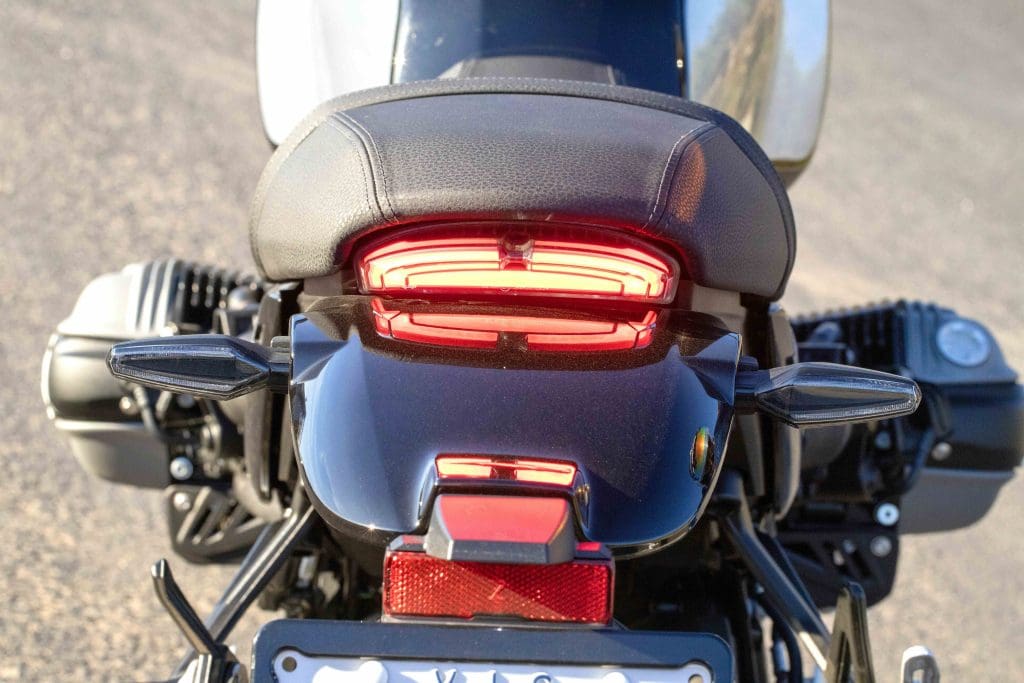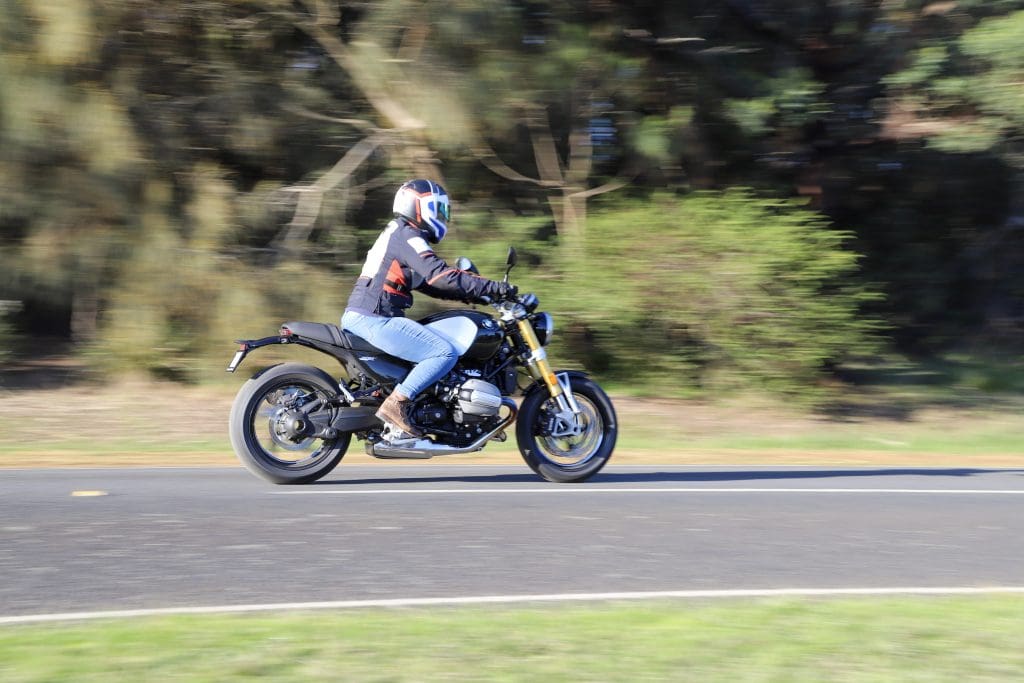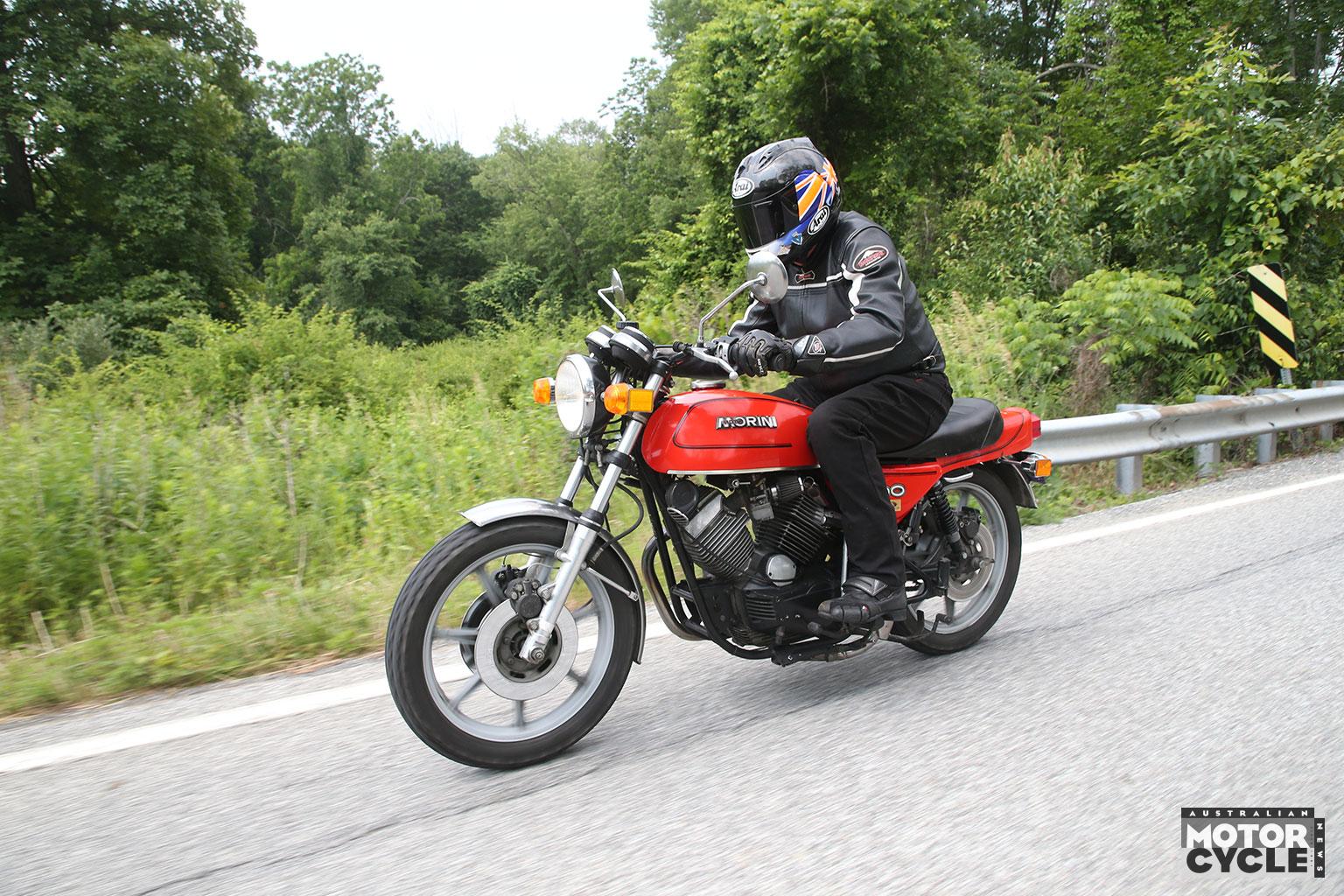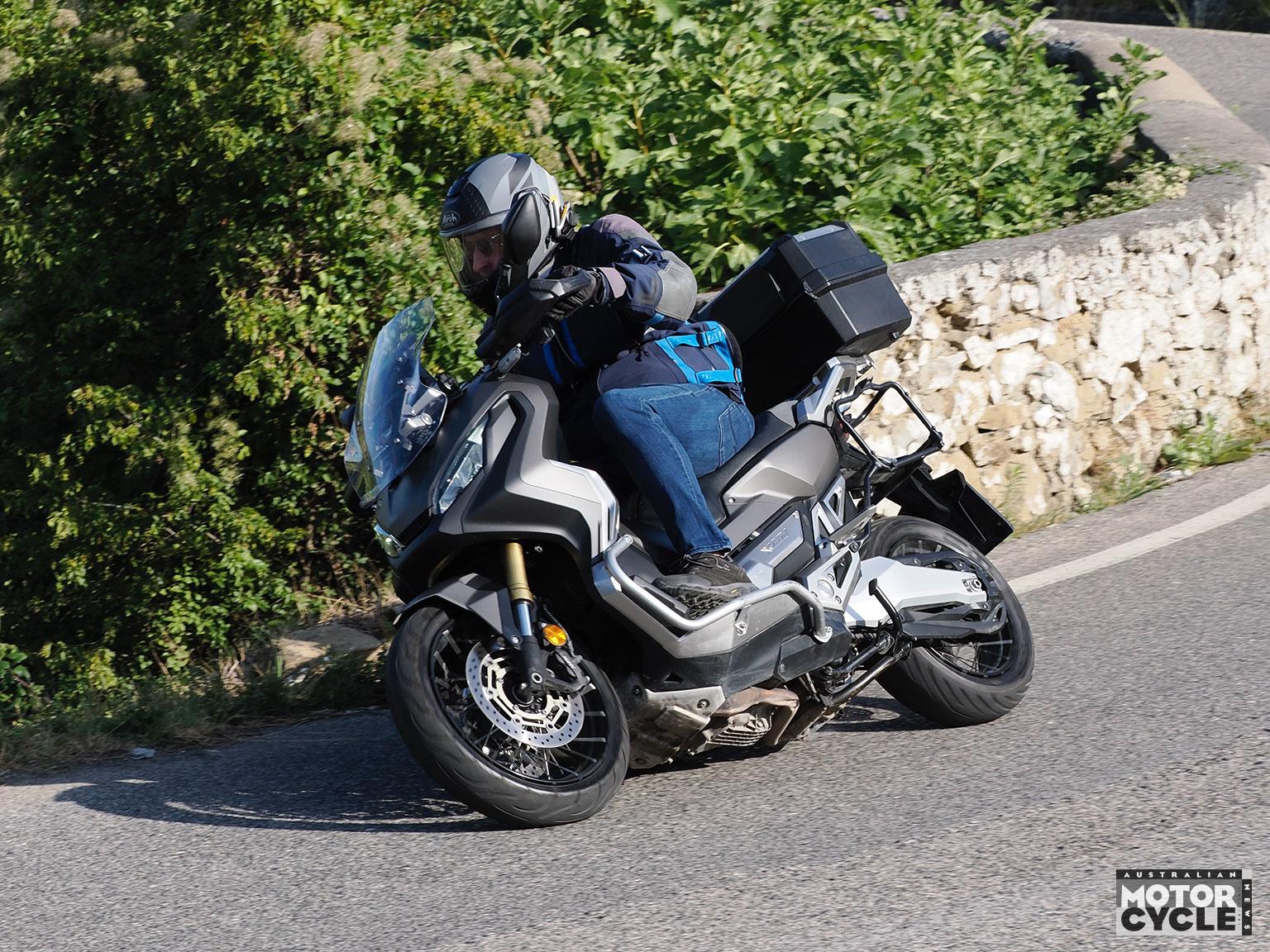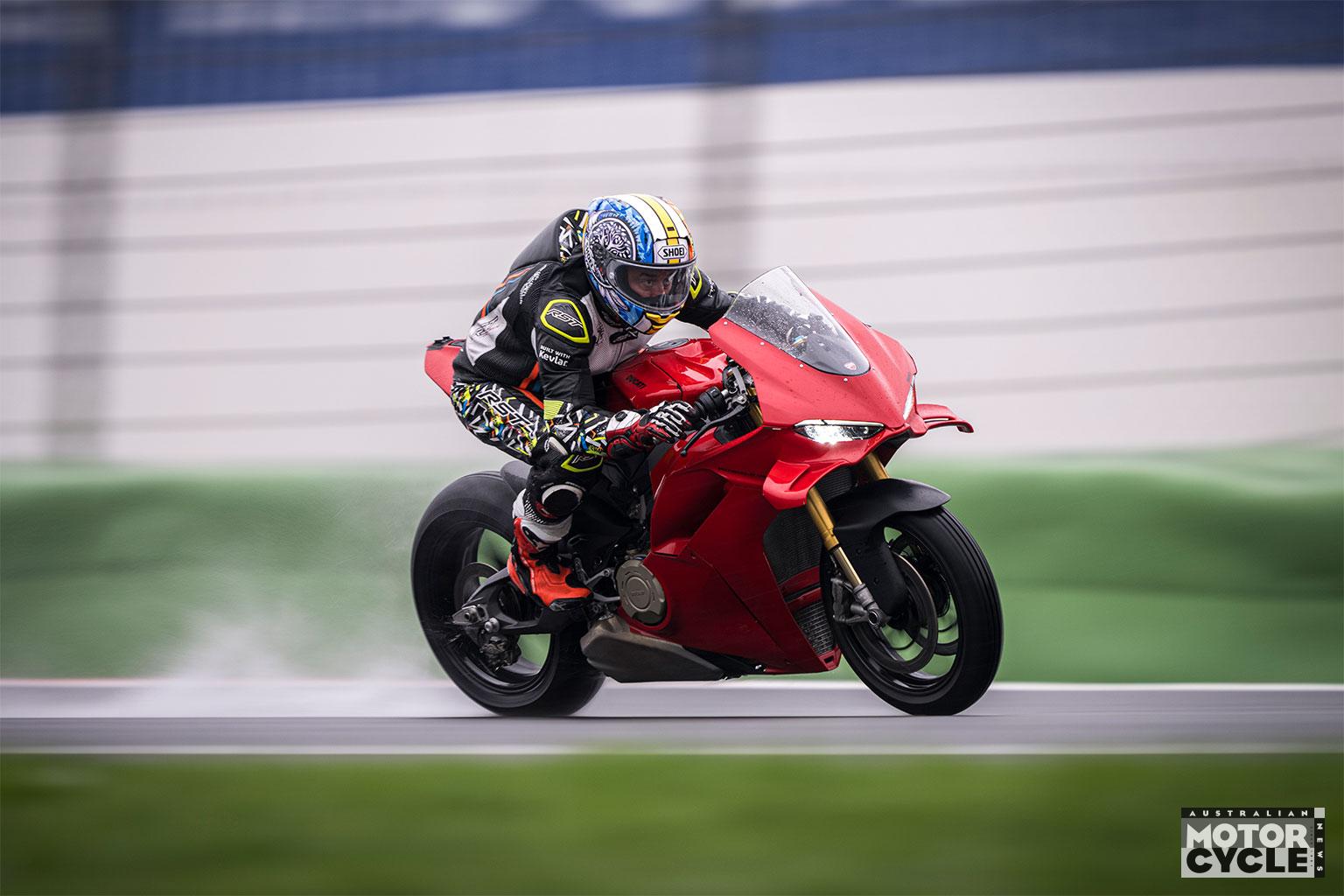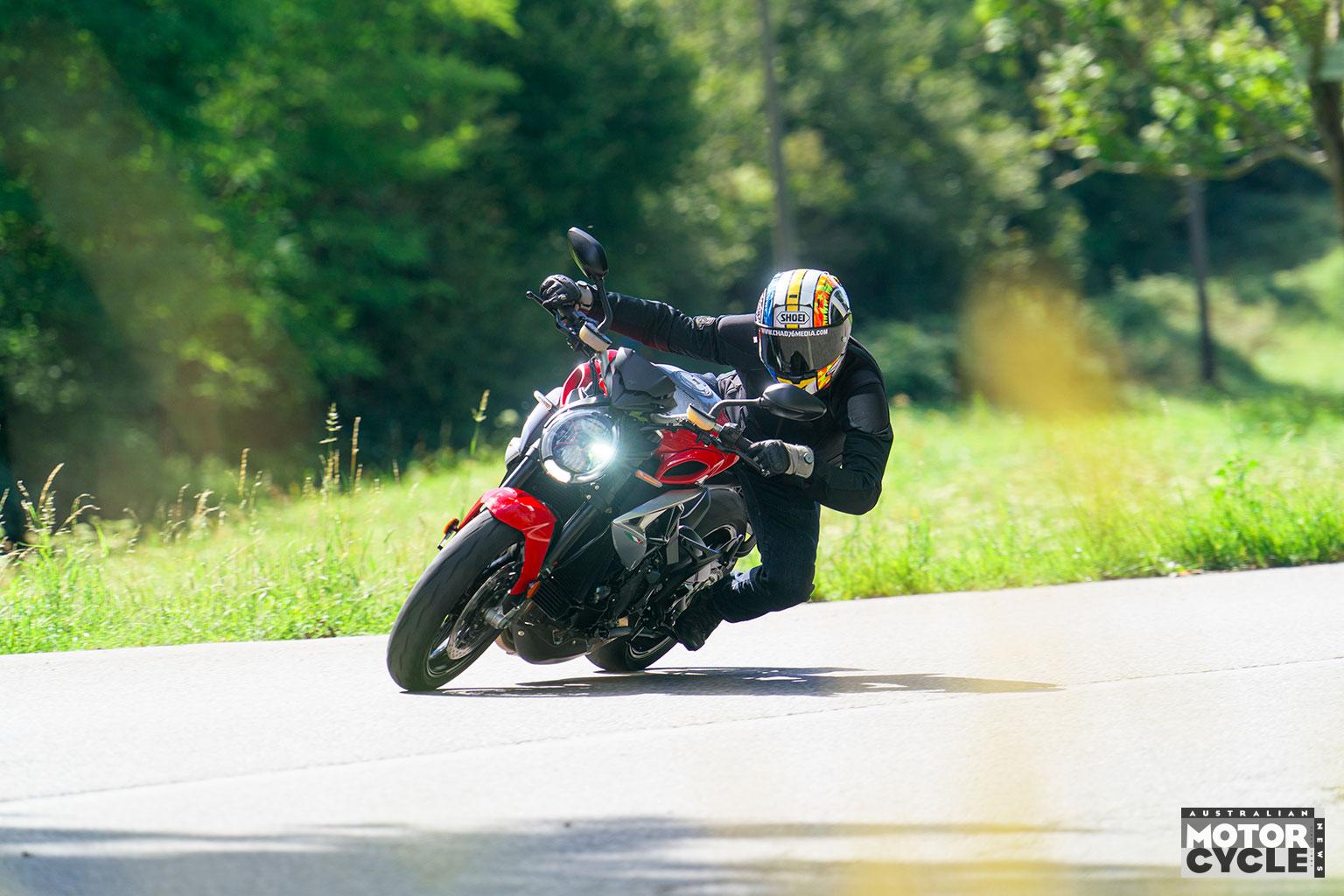What do you get when you cross one of motorcycling’s most iconic engines with some very convincing retro-cool styling? The BMW R 12 nineT, that’s what…
Every now and then, all the elements of a motorcycle will harmonise, elevating it from a bundle of bolted-together parts that form a vehicle into a bike that comes to life with character and temperament, and the whole package just resonates with you. All variants of BMW’s now decade-old R nineT series have been some of those bikes for me.
Over the years I’ve spent time on the Pure, I’ve ridden the Racer and even packed up the Urban G/S and rode it almost 1000km in the middle of winter to the 50th anniversary Alpine Rally in 2019. There’s something about that 1170cc boxer engine mounted in a long and low chassis and topped off with on-point styling that really speaks to me. It’s modern, but not over the top. It’s quick, but not stupid. It’s a big bike, but has a low seat height. And the styling is on-trend, but won’t date. It’s a decision you can make with your head and heart in equal measure.
For 2024, the R nineT gets slotted under BMW’s R 12 banner and so is called the R 12 nineT. There are three variants, but more on that later, as well as a heap of optional accessories to complement the retro custom theme.

Despite the newish name, the 2024 model uses the same engine as the decade-old range, albeit with a few tweaks to pull its emissions socks up to today’s standards and in a different state of tune to the R 12 cruiser. There’s a new chassis that’s said to be both lighter and simpler – a one-piece tubular-steel affair instead of a two-piece unit. The intake which was used as a styling feature along the base of the tank on the outgoing models is now tucked away under the seat. And as well as radial-mounted calipers now replacing the axial-mounted Brembos of the past, a new beefier fork also now offers full adjustability.
So basically, where the old R nineT needed to speak to both the cruiser set and the cafe-racer set, the new R 12 platform covers the full spectrum, meaning the R nineT can be specced – and priced – a little bit higher than its laidback equivalent.
Sit astride the 795mm high seat and you’re met with a long aluminium tank, a wide, one-piece handlebar and a pair of analogue clocks. Fire the big boxer into life and you feel the whole bike shudder, as if someone just walked over its grave, before it settles into that familiar sounding idle. The bike I’m riding has the optional but still road-legal Akrapovic fitted, which amplifies the boxer’s exhaust to a more distinguished but in no way obnoxious note.

Actuate the hydraulically operated single-disc dry clutch and select first gear. The gearbox is loud and clunky but it suits the retro focus and I can’t help a grin as I roll off down the street, relieved the latest iteration has lost none of the qualities I loved about the R nineT models of old. Even on the move, the gearbox is noisy, reminding you just how far back this engine and gearbox combo dates. There’s a quickshifter fitted as standard on the version I’m testing, which should hide the gearbox’s shortcomings, but while it’s great on downshifts I can forget about using it in the first couple of gears. In first and second gear, regardless of the revs the engine is carrying, the cut to the ignition is harsh and the gear change so jerky it’s embarrassing.
Okay, maybe the clunky gearbox can hide behind the retro mask but the quickshifter on the R 12 cruiser I tested (AMCN Vol 74 No 01) was faultless, so there’s no reason why the R nineT’s shouldn’t be, too. Because the quickshifter has been added, and given how perfect I found it to perform on the R 12, I’m sure it’s an issue that can be fixed.
I do love that you can move through the gears without affecting the very excellent and well-sorted cruise control system. It didn’t matter how steep the incline or decline I found myself on, the cruise-control system kept the selected speed perfectly, so top marks there.
The horizontally opposed engine is good for 80kW (107hp) at 7000rpm and a healthy 115Nm 500rpm earlier at 6500rpm and is where so much of the bike’s character comes from. Fueling off the bottom is sharp and builds in a way that only BMW’s iconic air-cooled boxer can, but it’s closing the throttle on the R 12 nineT that takes some getting used to. Because, just as I experienced on the R 12, as you’re approaching a turn or an intersection and you shut the throttle and reach for the front brake, deceleration isn’t instant. It’s not far off it, the engine’s probably off throttle by the time your fingers have reached the lever, but those couple of milliseconds are really off-putting.

The engine braking is really pronounced on the big boxer, and especially in Dynamic mode, meaning there are times when you need a very small throttle opening where the pick-up is quite abrupt, so I would tend to keep a small but constant throttle opening and temper my speed by dragging the rear brake rather then doing so with the light-switch-like throttle. Of course it’s less noticeable in one of the two softer riding modes of Rain and Road, but where’s the fun in that?
Like the R 12, the three-tiered range starts with the $26,465 (ride away) base model. The version I tested was the $26,990 (ride away) R 12 nineT HL, which gets the Comfort Package (adding cruise control, heated grips, the two-way quickshifter and hill-start control) as well as headlight pro, tyre-pressure monitoring and phone connectivity (including the SC universal phone holder). My testbike also had the $1519 Akrapovic exhaust plus the $899 Option 719 cylinder head covers which, once you pay for labour to fit them, takes the price to somewhere in the region of $30k.
The top-tiered model is the R 12 nineT Option 719, which adds all the goodies from the HL plus wire-spoked wheels, a host of billet gear, including an aluminium windshield and rear seat cowl, as well as the aluminium bodywork and red frame colour scheme, setting you back $32,990 (ride away).
The long 1511mm wheelbase and relaxed steering geometry strike a calm balance between stability and agility. It takes more input to muscle it through a quick section of twisty road than say, a S 1000 R, but its 220kg is carried low in the frame and it’s planted and predictable rather than flighty and agile. There is a steering damper fitted as standard, and it’s pushing on less-than perfect backroads where its inclusion is justified.
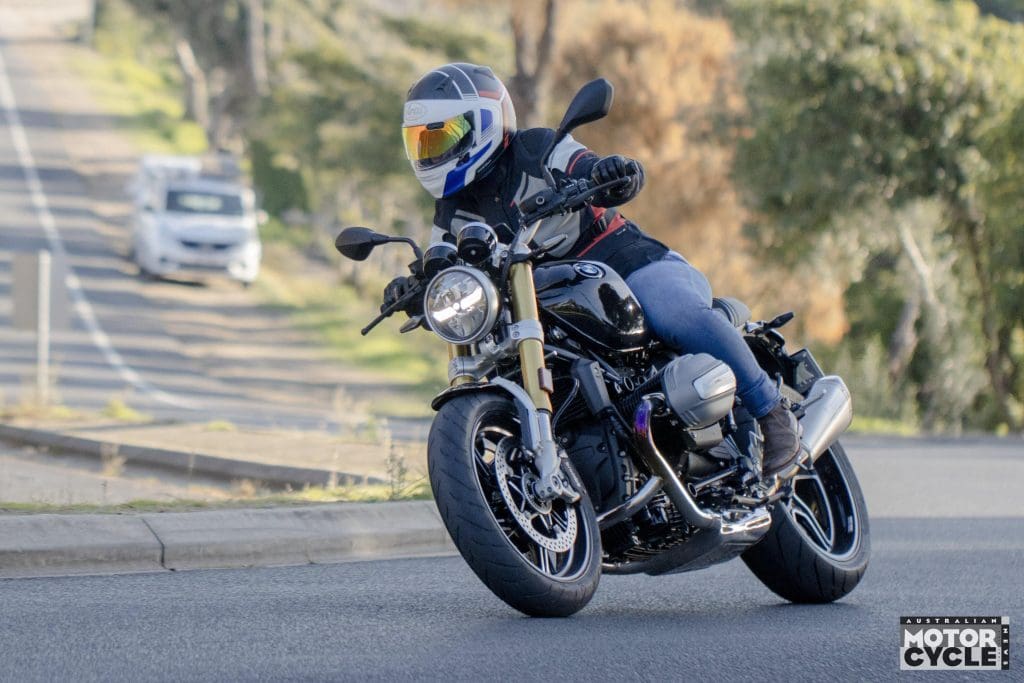
In these conditions, the radial-mounted Brembo calipers are, again, predictable rather than powerful, but are well suited to the bike’s design brief. And it was only out on a quick ride through some of South Gippsland’s beautiful but bumpy backroads that I found I needed to back off the preload slightly, which is done easily via the remote adjuster just below the rider’s seat.
To my eye, the stand-out design elements are the single-sided swingarm, which incorporates the shaft final drive – also responsible for so much of that aforementioned character – the exposed brushed-aluminium knee insets on the 16-litre tank and the chromed collector box that sits under the engine. BMW didn’t need to bother extending the chrome to the underside of the collector box – not many bikes do – but it’s that attention to detail that I really like on the R nineT and, let’s be honest, details you’d expect on a relatively low-tech bike that costs as much as it does.
The dash is an analogue affair, albeit with two small LCD insets which you can set up to display which pieces of info are always shown and which bits you need to scroll through to find. It’s old-school, but still very informative. The left-hand grip includes BMW’s multi-controller wheel, for reasons unknown to me, as it doesn’t operate anything on the analogue dash. And while there is a small 3.5-inch TFT screen in the options catalogue, it was fitted to the R 12 I tested, and the wheel didn’t control anything on the dash in that application either.
The retro segment has long been a hard-fought and lucrative one for many brands, especially as the average age of motorcyclists increases year by year, but in terms of large-capacity retro offerings I’m not actually convinced there’s any better, certainly when it comes to timeless design. Kawasaki’s Z900RS probably tugs at the heart strings with as much force, but the inline-four cylinder powerplant has nothing on the iconic air-cooled boxer – mind you, it’s nearly half the price.

And even though Triumph’s Thruxton RS is only a few hundred dollars less expensive, the price really is the elephant in the R nineT’s room. It’s clear I’m a big fan, but whichever way I look at it, I can’t help but feel that it is overpriced. Yes, it’s a gorgeous big-bore retro from a premium brand, but it runs analogue clocks, while cornering ABS and traction control are the only gadgetry to speak of. Add to the fact that the new chassis – said to be lighter and simpler – would also translate as less expensive to produce and you and I both know that engine wouldn’t owe the firm a cent after all of these years in production…
Even in base-model trim, I do find the $26,465 (ride away) hard to take, especially when seven years ago the simplest R nineT Pure was $17,690. Yes, there are now better brakes, higher-spec suspension, a cleaner engine and that new chassis, but even with inflation and rising costs, a near $9k increase is a big ask. With high-quality Chinese offerings knocking on the doors of the Australian market, I believe so-called premium brands are going to be forced to rethink their strategies in the the next decade.
But if I had the money to buy a 2024 R 12 nineT HL would I spend it? There’s no question, I absolutely would, although I would swap the $899 cylinder-head covers for a set of $835 wire-spoke wheels and pocket the change.
Because sometimes some bikes just resonate with you and allow you to feel something that money just can’t buy.
PROS: A hugely successful execution of an authentic retro nakedbike.
CONS: It lacks gadgetry for the asking price and the quickshifter needs tweaking.
THE ROAD TO NOW
In 2013 BMW was celebrating its 90th birthday, and so collaborated with renowned designer Roland Sands to reimagine a modern interpretation of the brand’s hugely popular R 90 S. Unveiled at Italy’s Concorso d’Eleganza Villa d’Este that same year, the so-called Concept Ninety was the forerunner to the first R nineT unveiled later that year and put into production for the first time in 2014. It became an instant sales hit.
In January 2014, Jon Urry tested the bike for AMCN in Europe ahead of its Australian release and noted, “believe it or not, demand is so high that even the factory workers who build the nineT have to wait until May 2015 until they can even get one!”
THE COMPETITION
KAWASAKI Z900RS

948cc inline four-cylinder
ABS & traction control
$16,909 (plus on-road costs)
Triumph Thruxton RS

1200cc parallel-twin
ABS & traction control
$26,690 (ride away)
BMW R 12 nineT HL

1170cc boxer
Cornering ABS & traction control
$26,990 (ride away)
SPECIFICATIONS

ENGINE
Capacity 1170cc
Type Horizontally opposed twin, four valves per cylinder
Bore & stroke 107mm x 73mm
Compression ratio 12.0:1
Cooling Air
Fueling EFI
Transmission Six-speed
Clutch Dry, single-disc
Final drive Shaft
PERFORMANCE
Power 80kW (107hp) @ 7000rpm (claimed)
Torque 115Nm @ 6500rpm (claimed)
Top speed 225km/h (est)
Fuel consumption 5.4L/100km (measured)
ELECTRONICS
Type Not given
Rider aids Traction control and Cornering ABS
Rider modes Rain, Road and Dynamic
CHASSIS
Frame material Tubular steel
Frame type Trellis
Rake 27.7°
Trail 110.7mm
Wheelbase 1511mm
SUSPENSION
Type BMW
Front: 45mm USD fork, fully adjustable, 120mm travel
Rear: Monoshock, fully adjustable, 120mm travel
WHEELS & BRAKES
Wheels Cast aluminium
Front: 17 x 3.5
Rear: 17 x 5.5
Tyres Continental ContiRoad
Front: 120/70ZR17
Rear: 180/55ZR17
Brakes BMW
Front: Twin 310mm discs, four-piston calipers
Rear: Single 265mm disc, twin-piston caliper
DIMENSIONS
Weight 220kg (wet, claimed)
Seat height 795mm
Width 870mm
Height 1070mm
Length 2130mm
Ground clearance Not given
Fuel capacity 16L
SERVICING & WARRANTY
Servicing First: 1000km
Minor: 15,000km
Major: 30,000km
Warranty Three years, unlimited kilometres
BUSINESS END
Price From $26,465 (ride away)
Colour options Blackstorm Metallic,
San Remo Green or Opt 719
CONTACT
www.bmw-motorrad.com.au
